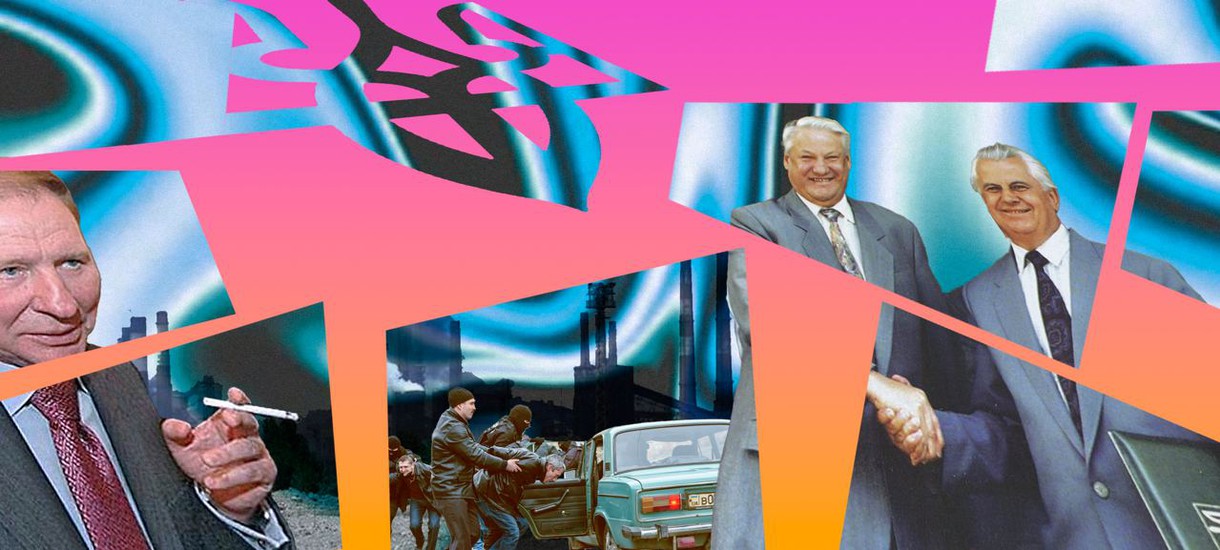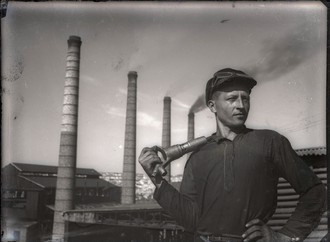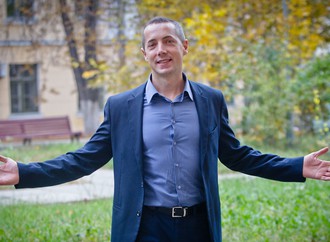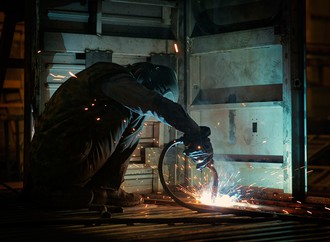In this chapter of his book, The Making and Unmaking of the Ukrainian Working Class: Everyday Politics and Moral Economy in a Post-Soviet City, Denys Gorbach offers an overview of Ukraine’s politico-economic landscape. He puts the economic transformations over the last thirty years in the political and cultural context. The first part covers the 1990s and Leonid Kuchma’s presidency; the second part analyses the politico-economic dynamics of the ‘oligarchic democracy’ starting from 2004. We published the abridged version of the chapter.
PART 1
On 24 August 1991, the Supreme Council of Ukrainian Soviet Socialist Republic (SSR) proclaimed the country’s independence. This step was taken in a parliament dominated by the Communist majority (‘the group of 239’), with the support of the 126-strong nationalist opposition. It was prompted by the failed coup attempt against the Soviet president Mikhail Gorbachev: the leader of the Russian SSR Boris Yeltsin had won over the coup plotters, and the Communist party of the Soviet Union was outlawed. Nevertheless, the formal abolition of the party did not mean that Leonid Kravchuk, the communist head of the Ukrainian parliament, lost his influence: on the contrary, passing the independence initiative he managed to remain in power, informal influence making up for the lack of institutional machinery. These characteristics – an unequal alliance of two opposing political groups that joined forces under the pressure of external events, driven by informal arrangements – can be extrapolated onto the whole history of the formation of the new nation-state.
The West and the rest
At the presidential elections on 1 December 1991, Kravchuk gained 61.59 per cent of votes, winning on the first ballot. His closest competitor, the leader of the nationalist Rukh party Vyacheslav Chornovil, received 23.37 per cent. His voters were concentrated in the three Western regions of Galicia, which were the only ones to give him an absolute majority.
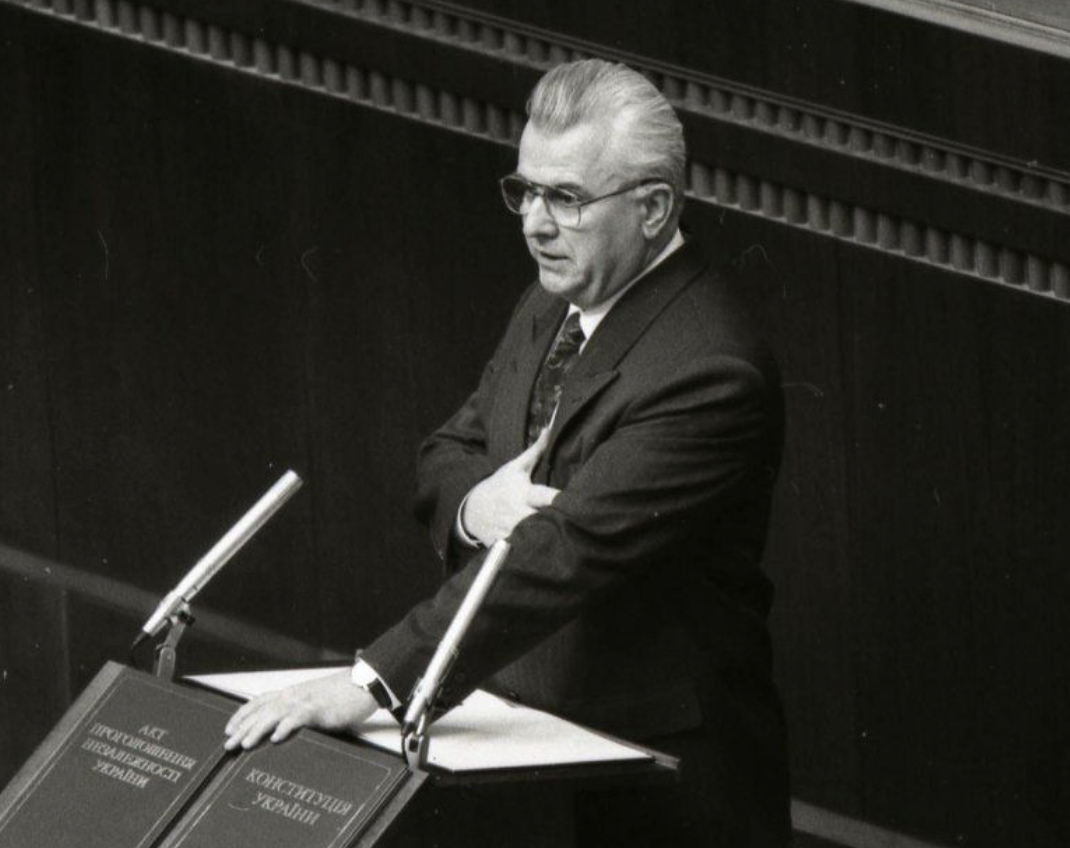
Inauguration of Leonid Kravchuk in the session hall of the Verkhovna Rada, December 5, 1991
The division between ‘the two Ukraines’ was bemoaned by intellectuals sympathizing with the nationalist and Westernizing element and condemning the Russophone ‘creoles’ (Riabchuk 1992). For them, this was a suitable language in which they could frame the dilemmas of national development without using the discredited language of class.
Anxious to avoid an internal conflict at the time when nationalist wars were ravaging other post-Soviet countries, the leadership of the new nation took an extremely cautious stance in terms of all kinds of social transformations. The spectre of ‘social explosion’ stymied attempts to quickly liberalize the economy or to impose the hardcore nationalist agenda on the population. Citizenship and language laws were quite inclusive towards the Russophone population, compared to contemporary policies of the Baltic states, and ethnic identity was played down in state policies. The social peace thus achieved was one of the factors contributing to the proverbial state weakness in Ukraine (D’Anieri 2007).
Heterogeneity was also a suitable epithet for Ukrainian elites. The dominating faction, the former nomenklatura, was a field of fierce competition between different patronage networks, organized by territorial principle. These geographically anchored patronage pyramids, known as ‘clans’, take root in the Soviet postwar reconstruction investments: three main industrial clusters, Kharkiv, Donetsk and Dnipropetrovsk, competed for the distribution of resources from the centre. This competition institutionalized a system of informal equitable distribution of administrative positions between these groups in 1950–1990 (Minakov 2019). By the end of this period, the Dnipropetrovsk group was dominant: in 1990, 53 per cent of Ukrainian executive officials came from that city (Zhuk 2010: 25).
In the new era, the landscape became more complex with the addition of a new elite faction from a different provenance: the ‘national democrats’, mostly coming from the intelligentsia of Kyiv and Western Ukraine. Boasting extensive symbolic capital, they commanded little administrative or economic resources, which made them structurally weaker. The ‘national democrats’ gained access to the nationalizing sites of the new state – the schooling system, cultural institutions and other platforms where they could promote their agenda without destabilizing society too much (Wanner 1998). They ‘accepted that the nomenklatura keep the reins of power and the levers of policy in exchange for a commitment to the new republic’s independence’ (De Menil 2000: 51).
Economic Rupture
In the last years of the Soviet Union, supporters of Ukrainian independence relied on the economic statistics that seemed to support their claim: the rich republic is being systematically exploited by Moscow due to unequal exchange. Ukraine alone produced about as much basic commodities as Germany, France and Italy, but the purchasing power of Ukrainians’ average wage was several times smaller. ‘Ukraine: a European state in potentiality, a Moscow’s colony in reality. We are poor because we are not free. To be rich, one has to be independent’, concluded a nationalist leaflet.

Rally calling for Ukraine to leave the USSR, Kyiv, September 30, 1990. Photo: Andrei Solovyev
However, the beginning of an actual economic separation soon showed that these calculations had ignored Ukraine’s dependency on the (post-)Soviet supplies and markets. The disintegration of these chains led to an extreme decline in industrial production: in 1996, it constituted only 42 per cent of the 1989 figure. The slump was a common experience for the region, but hardly anywhere else was it so deep: the average indicator for CEE was 88 per cent, for CIS 54 per cent (Van Zon 1998: 610). The drastic hike of oil prices by Russia translated Ukraine’s structural dependence on energy imports into a structural current account deficit.
In order to finance their trade imbalances, post-Soviet central banks unleashed inflation competition. In order to keep enterprises running, the Ukrainian parliament introduced a national fiat currency and forced the central bank to flood the economy with cheap credits to agriculture and industry. Maintaining the volumes of natural production was supposed to not only prevent massive layoffs but also stimulate the growth of nominal GDP, while social protection would shield the population from growing prices. With this aim, net credit expansion to enterprises in 1993 reached 47 per cent of Ukraine’s GDP. Their annual interest rate constituted only 20 per cent (Åslund 2000). In fact, this unleashed hyperinflation, which erased people’s incomes and rendered meaningless the very notion of monetary income as such: the consumption price index was 2,100 per cent in 1992 and reached 10,256% in 1993.
Soft budget constraints on a scale unseen in the Soviet Union (Popov 2020), extreme embeddedness of manufacturing into the fabric of social life (which made mass bankruptcies unthinkable) and extreme price differentials across national borders promoted rent-seeking behaviour among the elite of the new state. The situation grew highly unstable in every domain: fiscal and industrial policy; relations with Russia; identity cleavages inside the country; division of powers between the main institutions and political groups; life standards and the social reproduction of the labour force. It was the last issue that triggered the event that structured Ukrainian political and socio-economic configuration on the macro level in a sustainable manner.
The Crisis of 1993–1994: The Dust Settles down
On 7 June 1993, the miners of a large coal mine in Donetsk went on strike over the rapid hike of state-controlled food prices. Besides the economic demands, the miners, supported and advised by their employers, put forward political demands that came down to wanting greater regional autonomy and snap parliamentary and presidential elections. On 18 June, the government agreed to hold a referendum on popular confidence in the president and the parliament and to double the miners’ wages – without guaranteeing against new price hikes. These were the gains of the workers; the enterprise directors, on the other hand, made the government cancel their fines, solve their debt problems and grant tax concessions and greater freedom to trade.
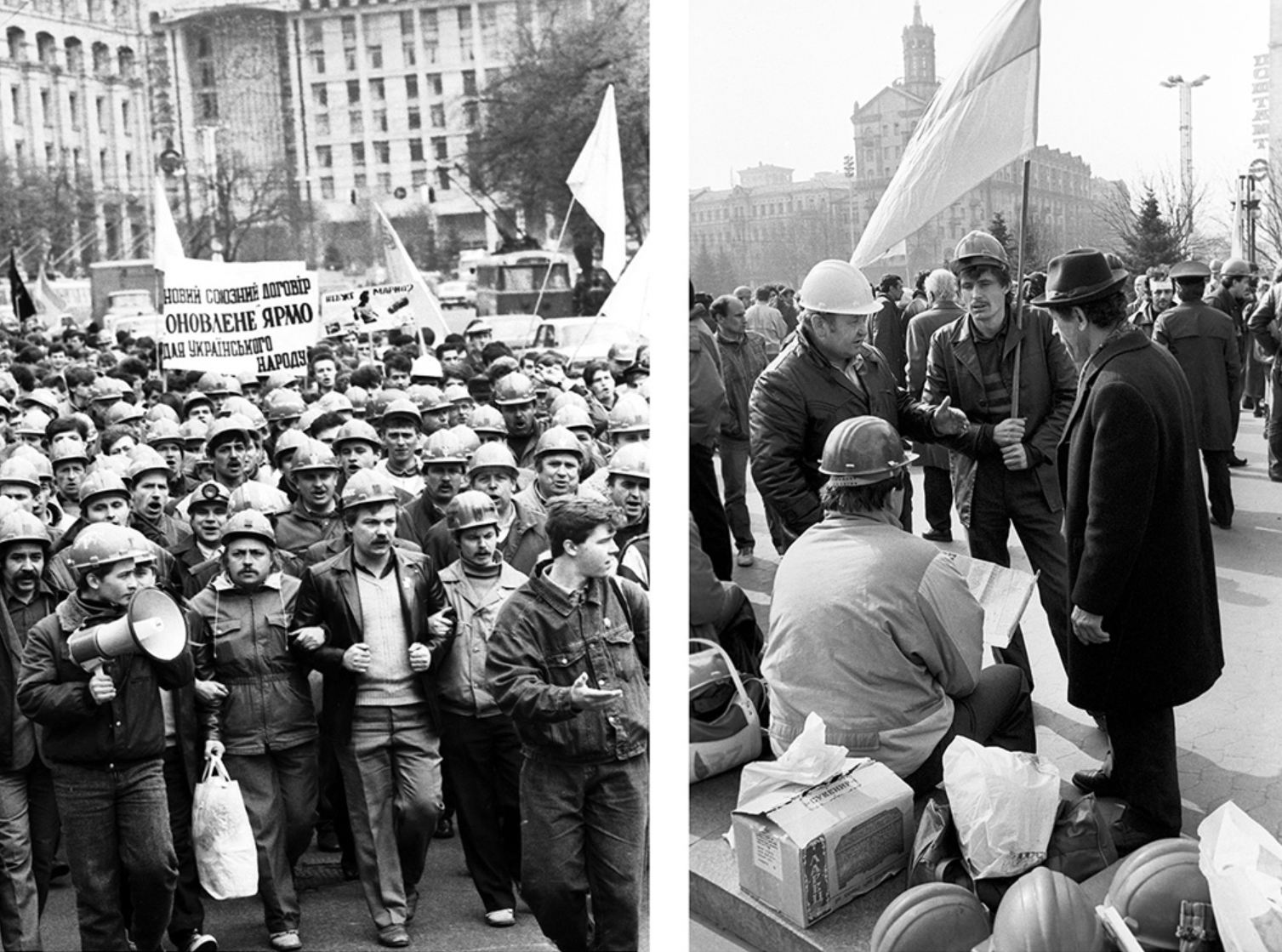
Donbass miners' strike in Kyiv, April 16, 1991. Photo by Valery Solovyov from the funds of Ukrinform
At the snap elections that followed, Leonid Kravchuk built his campaign on the nationalist agenda, effectively hijacking the Western Ukrainian electoral base of his nationalist adversary from 1991. And just like the latter, he lost to an adversary posing as a moderate pragmatist concerned for the social cost of reforms and not too keen on identity issues. The new president, Leonid Kuchma, was supported by the ‘red directors’, who publicly demanded that the government tackle ‘real’ (as opposed to ‘ideological’) problems, stop ruining economic connections with Russia and impose law and order (Lytvyn 1994: 317).
A technocrat with the mission to save the country’s industry, Kuchma made a U-turn and unveiled a liberal economic programme immediately after the election. He abolished most price controls, leading to a 72 per cent price hike (Shpek 2000: 31), and cancelled wage indexation, allowing inflation to eat into workers’ incomes (Pynzenyk 2000: 81). This created the political space for leftist opposition led by Socialist and Communist parties.
On the other hand, Kuchma’s economic agenda differed from the standard IMF recipes. He advocated quick privatization but argued that the integration of Ukraine into the global economy had to be done gradually and be preceded by active industrial policy. Kuchma ‘pledged to eliminate some of the most egregious rent-generating distortions, but also promised his industrial allies new spoils from large-scale privatization of major state enterprises’ (Kudelia 2012: 420). He was also not prepared to support a fully-fledged austerity and deregulation plan drafted by his prime minister. This divergence from the neoliberal orthodoxy alienated the ‘national-democratic’ opposition.
Thus, the Ukrainian political landscape gained a stable structure: in its centre was the president, acting as a representative of and an arbiter between ‘red directors’ who controlled the country’s industrial assets. He followed the careful path of liberal transformations, embedding them in local social realities, and maintained a pragmatic attitude towards the dominating political ideologies, flaunting technocratic instincts. On his flanks, there was left and right opposition. The former was constituted by (post-)Stalinist mass parties, which commanded significant grassroots mobilizing capacities and impressive parliamentary presence. Their political agenda combined a leftist socio-economic agenda with a pro-Russian geopolitical stance and reticence towards the ‘Ukrainianization’ of the country’s cultural landscape. The voters of these parties mainly lived in the industrialized cities of Ukraine’s East and South. The rightist opposition, conversely, relied on the agricultural Western regions and on intelligentsia in Kyiv and Western Ukrainian cities. It harboured a Westernizing, pro-European neoliberal agenda combined with ethnic nationalism.
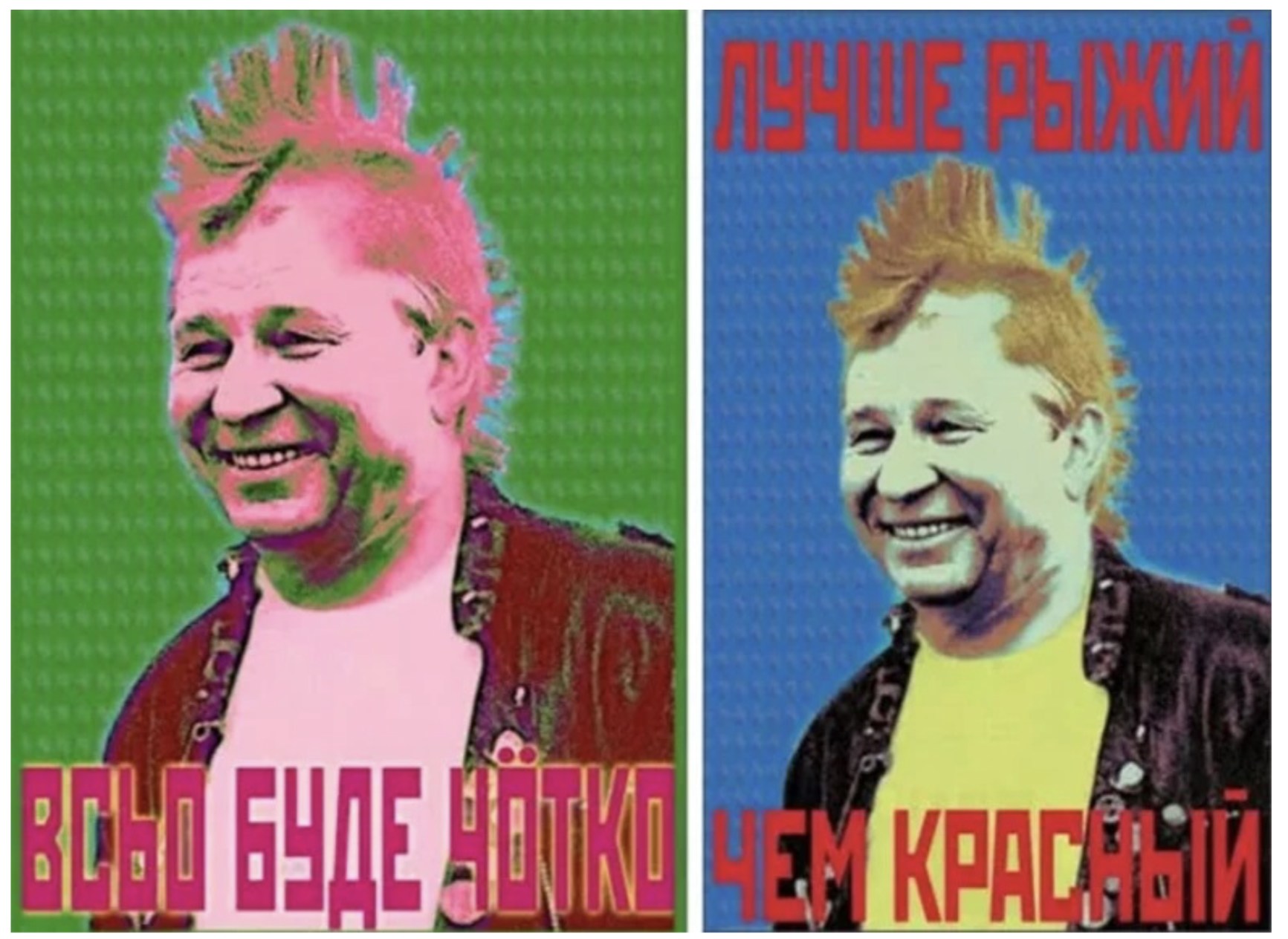
Examples of Leonid Kuchma's campaign leaflets
Centralized and Fragmented Hegemony: Biudzhetniki, Clans, Unions
The newfound stability of this configuration was due to the inter-class alliance that co-opted two dominated classes in differing manners. One pillar of this variegated alliance was concluded in a centralized fashion between the state and public sector employees. Public bureaucrats of lower ranks, doctors, teachers and other public employees collectively known as biudzhetniki (‘those who are paid from the state budget’) have found themselves to be relatively less precarious in terms of employment and access to a number of benefits provided by the state. The trade-off was the abysmally low official salaries, which gave birth to a ‘second economy’ in public institutions: biudzhetniki have learnt to augment their meagre incomes with informal side payments, monetary or otherwise (Polese and Williams 2016). What is more, this tacit agreement implied the right of the state to mobilize its employees for purposes going far beyond their formal job descriptions: from mandatory attendance at political demonstrations and other gatherings to participation in various schemes during elections.
The other pillar linked the dominant social group of ‘red directors’ with the industrial workforce. One of the vivid manifestations of the commonality of their interests in the 1990s was the abundance of workers’ protests led by directors of enterprises. The so-called ‘directors’ strikes’ addressed their demands to the state as the ultimate arbiter of the country’s economy, asking for tax exemptions, protectionist measures or simple fiscal transfers to liquidate wage arrears. This inter-class bloc was realized at large ‘city-making’ enterprises that were too big to fail and/or able to insert themselves into important capital flows in the new economic conjuncture: metalworking, mining and machine-building. These enterprises, concentrated in the heavily industrialized regions of the South-East, offered their employees and the local and regional authorities relatively generous pacts ensuring collective survival.
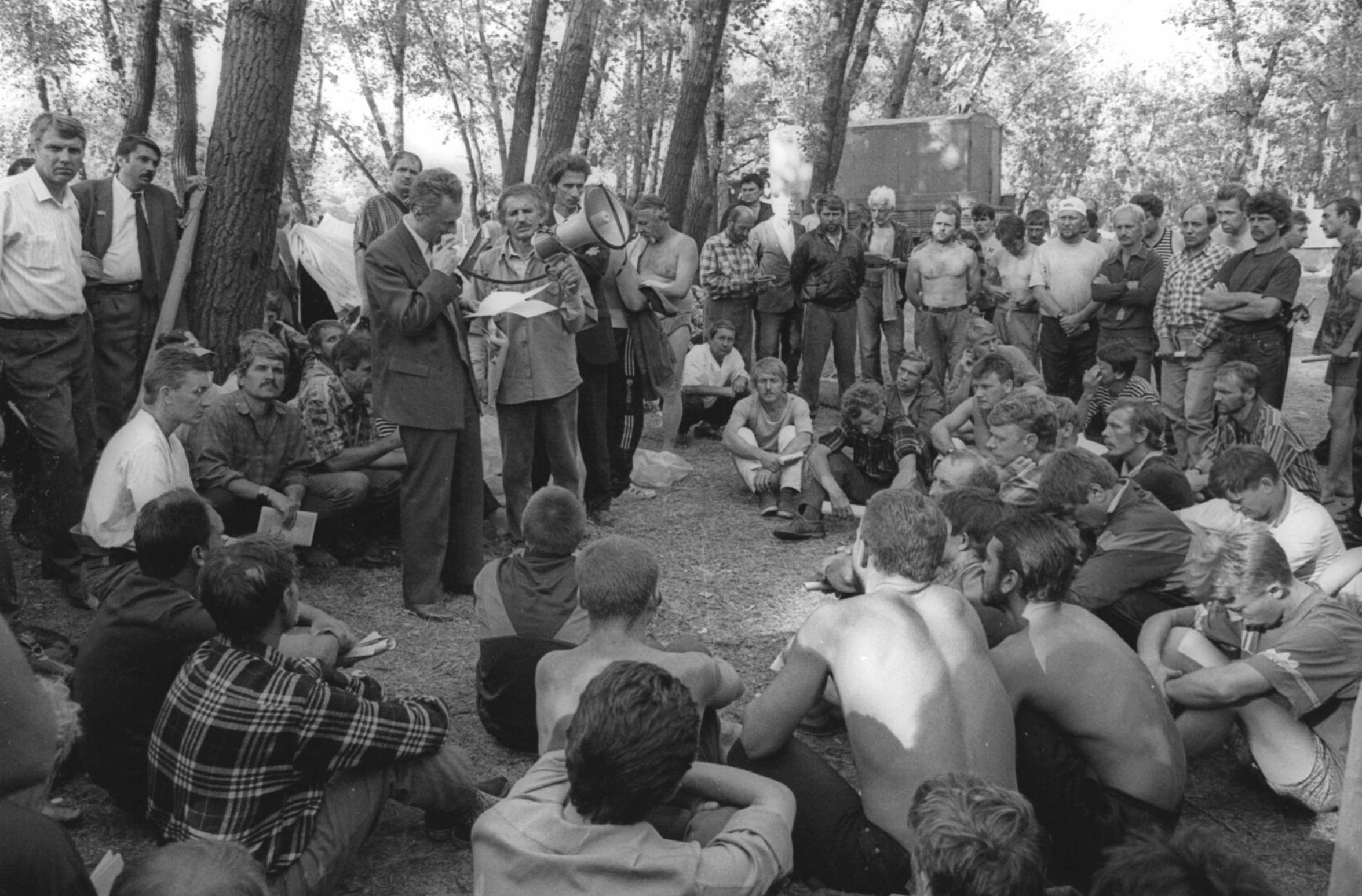
Meeting in the striking tent town of miners on Trukhaniv Island, 1998. Photo from the funds of Ukrinform
Fragmented hegemony embedded itself into existing patronage pyramids and into global markets, remoulding the relations between clans. The Kharkiv clan, which controlled the relatively high-tech machine-building industry, gradually decreased in prominence compared to the Dnipropetrovsk and Donetsk groupings, whose economy was based on mining and metalworking. The latter two were not on an equal footing, either. The ascent of Leonid Kuchma opened the era of domination by business interests from Dnipropetrovsk. Besides more distant relations with the head of state, the Donetsk economy to a great extent consisted of coal mining, which, unlike metallurgy, was entering a systemic profitability crisis. Donbas coal mines, technically exhausted and dependent on the state subsidies, suffered from the greatest wage arrears and were a hotbed of working-class militancy – in a striking opposition to neighbouring Dnipropetrovsk. Lacking a stable hegemonic configuration, the ruling class formation in Donetsk was more contested, featuring more explicit violence and conflicts involving the criminal world.
Who has been left out of the 1990s social pact? Among a number of excluded groups, one deserves a short mention here: the employees and employers in the informal economy. The share of the informal sector quickly reached 50 per cent of GDP or more, according to various estimates. It benefited from an initial lack of inclination or capacity to regulate it: various small-scale trading and manufacturing activities usually avoided taxation, staying under the radar of the state. Their modus operandi did not allow for legitimate claim-making towards the state; at the same time, all claims made by the state (e.g. taxes) were also illegitimate.
Oligarchic Democracy in the 2000s
The first signs of Ukraine’s economic recovery were linked to the rebound of global demand for metals after the crisis of 1997–1998. Seizing the opportunity, the state agreed to support an ‘economic experiment in the mining and metalworking industry’, which lasted from 1999 to 2001. It amounted to restructuring or writing down fiscal debts accumulated in the previous years, provided that the enterprise in question paid its current taxes and wages. The experiment, which was replicated in other industries on smaller scales, prevented bankruptcies, which would have been a threat to the existence of entire cities dependent on enterprises (Paskhaver, Verkhovodova and Agieieva 2007).
The economic growth that followed became the background for the major power shift of 1999–2000. It allowed Leonid Kuchma to win the presidential elections in 1999 by mobilizing the anti-communist nationalist vote in the West and by enacting coercion and patronage power structures in the East.
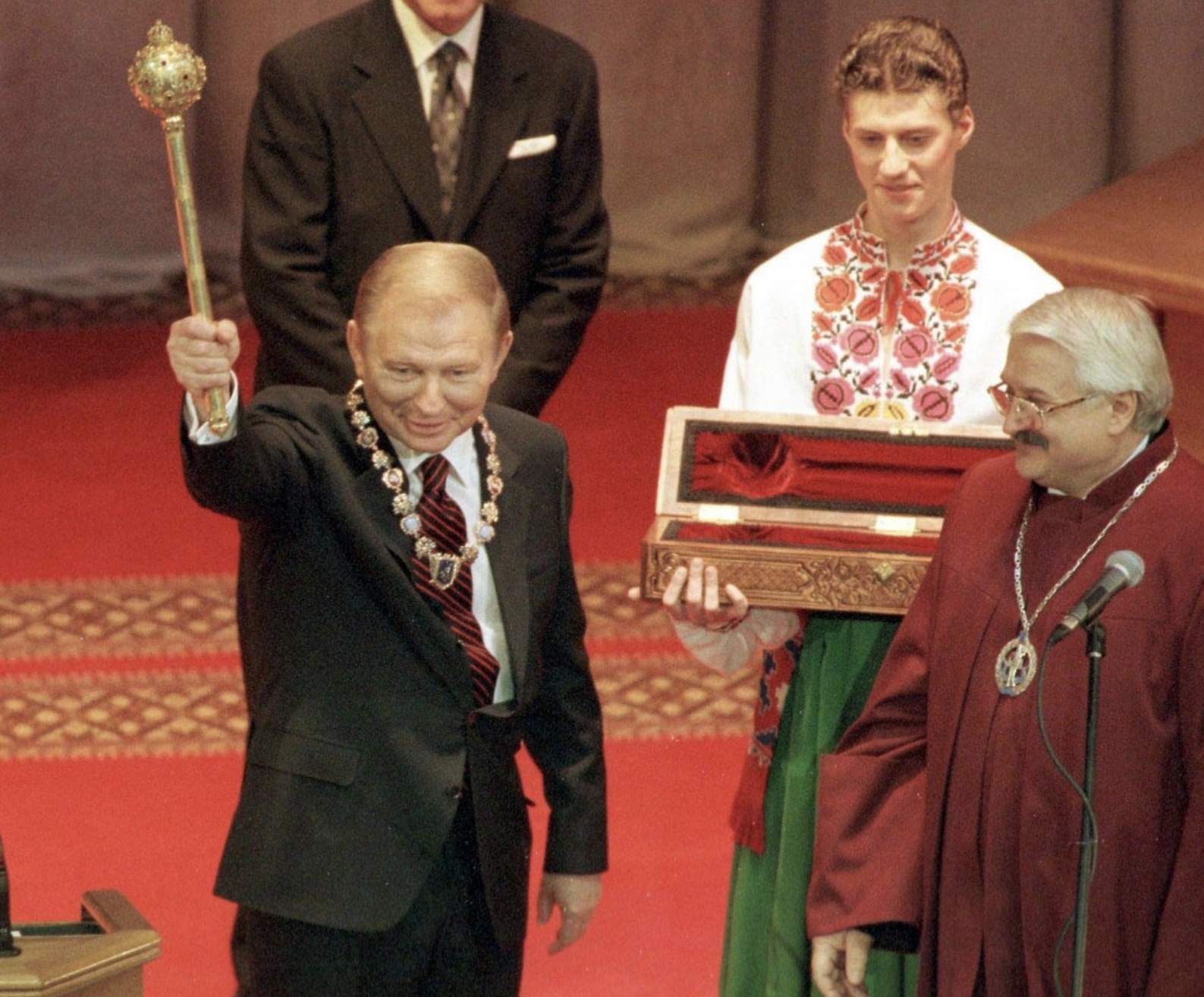
Leonid Kuchma's inauguration, 1999
From Clans to Oligarchs (1999–2004)
Following the changes in popular usage, the academic vocabulary of the early 2000s has gradually switched from the term ‘clans’ to ‘oligarchs’ – a word coined by Russian journalists initially to describe the powerful businessmen of the Yeltsin era (Fortescue 2006). More than just a terminological shift, it coincided with meaningful changes in the organization of political and economic power on the national scale, affected during Leonid Kuchma’s second presidential term. From then on, he relied less on vague regional loyalties, typical for the previous period, and more on informal business groups, which might be in fierce competition despite common regional provenance.
This differentiation is traceable in the case of the Dnipropetrovsk clan that united ‘neo-nomenklatura and capitalists-in-the-making who emerged from the criminal-political nexus and Komsomol’ (Ishchenko and Yurchenko 2019). Yuliya Tymoshenko, a local Komsomol activist who ran a video club (Zhuk 2010: 299–301), used her connections to start a joint fuel trading business with Viktor Pinchuk: they imported natural gas, paying for it with pipes produced by Ukrainian factories (Balmaceda 2009). Later, Pinchuk parted ways with Tymoshenko; he consolidated pipe-making industry in his corporation Interpipe and married the daughter of President Kuchma. Family connections made Pinchuk an oligarch par excellence: a billionaire whose wealth and social status were conditioned by his intimate access to the high ranks of the state apparatus. Tymoshenko’s gas trading company YeESU, on the other hand, did not survive the fall from grace of her patron, the former prime minister Pavlo Lazarenko. Her economic assets were taken over by Pinchuk and others (Matuszak 2012: 15–16).

Deputies Oleksandr Yelyashkevich, Yulia Tymoshenko and Viktor Pinchuk on the sidelines of the Verkhovna Rada, 1998
The other important oligarchic group from Dnipropetrovsk is known as the Privat group. Its founders, Ihor Kolomoiskyi and Hennadiy Boholiubov, organized barter schemes, supplying industrial enterprises with raw materials and marketing their produce. Privatbank, founded with the help of a former Komsomol leader, Serhiy Tihipko, flourished during the hyperinflation period. Having gained prominence among the population, the bank was able to accumulate 2.3 per cent of all privatization vouchers emitted by the state and started buying industrial assets (Yanitskiy and Stack 2018). Serhiy Tihipko left the group to start his own business group, as well as a political career; however, just like Yuliya Tymoshenko, his economic assets are not so immense to qualify him as an oligarch without reservation. Kolomoiskyi and Boholiubov, on the other hand, have become classic oligarchs – billionaires deploying their political resources through informal channels to expand their clout – by putting loyal people in important government positions and on the boards of state-owned companies as well as by indulging in corporate raiding on a massive scale (Rojansky 2014: 424–25).
Rinat Akhmetov built his patronage pyramid on the basis of the Donetsk regional clan, more tightly knit than the politically amorphous Dnipropetrovsk businessmen. It centred around Viktor Yanukovych, the regional governor appointed in 1997, who became prime minister in 2002. Besides having a clear political leader, the Donetsk ‘clan’ centralized its political activities in the single Party of Regions, which united various oligarchic groups (Matuszak 2012: 14). As the clan started to expand beyond its home region under Yanukovych’s premiership, initial unity gave way to conflicts. Akhmetov’s SCM corporation turned out to be the most successful, competing with Serhiy Taruta’s ISD group.

Viktor Pinchuk, Serhii Taruta and Rinat Akhmetov talk during a lunch conference on the topic: Ukraine. What's next? in Davos (Swiss Confederation), January 25, 2008. Photo by Mykhailo Markiv / POOL / UNIAN
There were other oligarchic groups, all of them politically embedded in a president-centred political system (Melnykovska 2015). Instead of the ‘red directors’ autonomous from the state, the new power bloc was more centralized, governed by strong presidency at the pinnacle of the formal state apparatus and informal norms.
On the party political terrain, Kuchma asserted his primacy over the parliament in 2000 by pushing the leftist parties out of key parliamentary positions and co-opting the right (Kudelia 2010). However, soon a new ‘democratic opposition’ emerged, whose ideology was a combination of a traditional Westernizing agenda of ‘national democrats’, anti-corruption and pro-democracy narratives. At the parliamentary elections of 2002, this opposition gained the majority of votes. This success was due to the resources of the second-rank bourgeoisie (Ilyin 2020), which grew strong enough to dare challenge the ‘closed access order’ controlled by oligarchs (Smahliy 2006).
